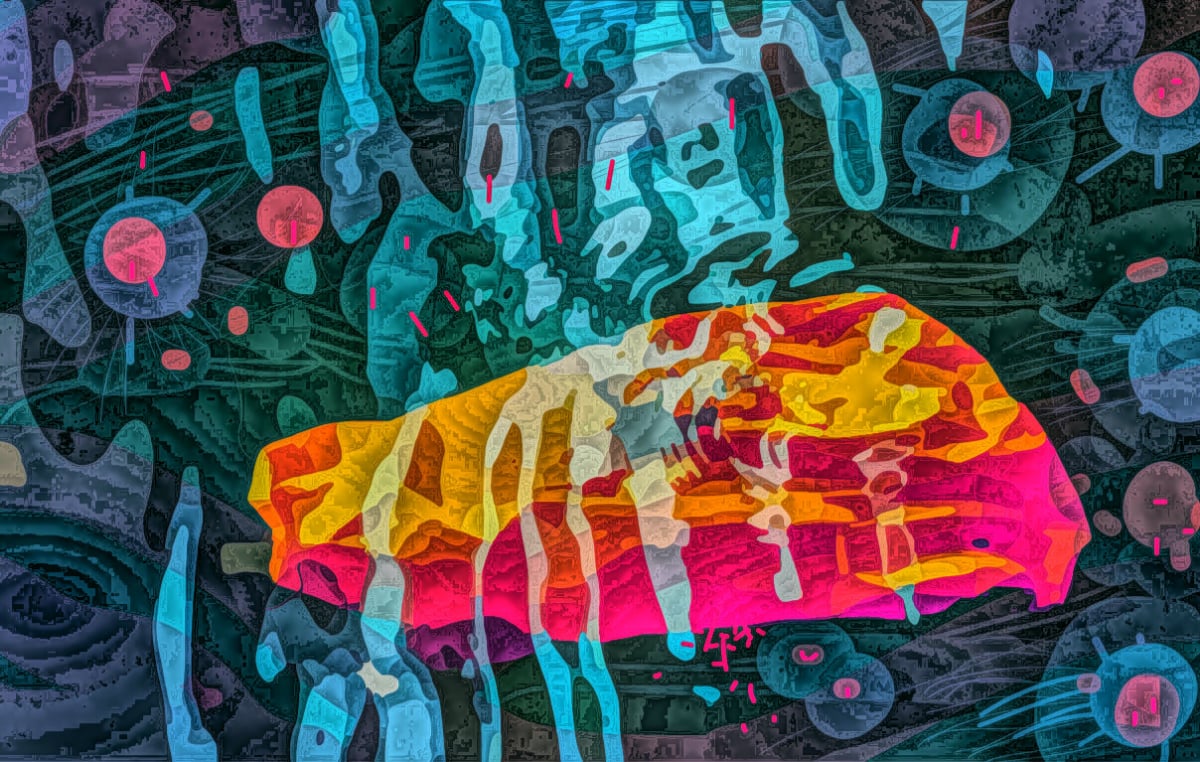
‘Enlight 166’, Jon Adams, #FlowUnlocked
Artists and researchers join forces for public art planning
Sam Wilkinson and Rosie Murdoch explain how a speed dating approach to partnerships led to artworks and outcomes beyond their expectations.
University College London’s (UCL) expansion east, the biggest in the university’s history, is “place-making” on a site that has been undergoing constant flux since 2007. We wanted to connect UCL researchers with artists in east London to make interesting temporary art commissions near the site of the new campus.
We started Trellis, funded by the research council for Engineering and Physical Sciences (EPSRC) and UCL East Public Art Programme, to foster knowledge exchange and engagement projects. However, in its second year the programme has grown into the backbone for UCL’s public art planning, evidencing the value of these relationships between artists and researchers.
Speed dating success
The unique tenet of Trellis is the relationship between community participants, the east London artist and a UCL researcher. Each project has pushed boundaries, allowing everyone to be heard and contribute to the final artworks. The outcomes and the artworks are co-designed by the community – whether they are “public artworks” or “making a place” is a secondary concern.
In the first year of Trellis, we arranged a “speed dating” event for 60 artists and researchers. Quick fire questions and answers allowed everyone in the room to have spoken to each other within an hour. This removed barriers so we could later share a relaxed meal with the artist and researcher. We had already gone through this intense getting-to-know-each-other stage, as well as the UCL East Public Art Programme, so we knew we had things in common already.
This year we refined this process to be more gentle and focused the timed questions around the object participants felt epitomised their research or artistic practice. This sparked new conversations each time; one participant told us they started describing their research in different ways. This process is all about being open. You will be surprised by the connections you make if you give them a chance.
The projects
The seven selected artists for the 2021 exhibition have strong ties to east London, either living there or working in the boroughs around the UCL East campus. Each of them has spent the last year working with UCL researchers, in partnership with local communities, to address issues of importance to the area.
Artists Briony Campbell and Jon Adams are working with psychologist Dr Georgia Pavlopoulou to explore the importance of relationships within the autistic community, reflecting on the impact of distancing and mediated communications during the pandemic from this group’s experience. Together, they are tackling damaging stereotypes about autistic people and celebrating autistic narratives.
Surveillance and asylum seeking in east London, the UK’s border regime, and the relationship between ‘identity’ and ‘identification’ are the subject of Edwin Mingard’s work with Dr Keren Weitzberg from UCL History. The research is exposing the gulf between the narrow data-driven perspective of the UK’s hostile environment policy and the rich lives of east London migrants.
Rubbena Aurangzeb-Tariq has worked with Professor Bencie Woll from the Deafness Cognition and Language Research Centre to examine the underrepresentation of east London’s deaf community, concentrating on its history, culture, the development and use of sign language – and the potential for digital video platforms to enhance its visibility.
Sara Heywood and Jane Watt’s collaboration with Dr David Chau considers the significance of heritage trees – in particular, the scientific, cultural, and artistic potential of the iconic mulberry tree – to community members in Bethnal Green.
And Sarah Carne and researchers Danielle Purkiss and Charnett Chau from UCL’s Plastic Waste Innovation Hub have partnered with Xenia community group to conduct citizen science investigations into food waste and plastic waste, using these experiments to explore science-led art production.
Community benefits
Community is at the core of Trellis. The programme set out to be mutually beneficial, offering communities the opportunity to develop their own creative practice, find new forms of self-expression, and engage with the latest in research on their own terms.
Beyond our expectations, there have been other less obvious benefits. Members of the community told us they feel they are actively contributing to testing new practices in sustainability, tackling personal challenges and feeling empowered and uplifted by the learning process. They can voice their political concerns and are being given a platform to share these, as well as their knowledge and heritage, with the wider community. They see themselves and their stories celebrated in galleries, demonstrating their unique creative and cultural heritage. This is a rare chance to be celebrated for all they bring to the country.
As the artworks for the 2021 exhibition are being realised, we have reflected on how the “speed dating” approach has allowed artists and researchers to find instinctive synergies, mutual passions and shared language that they would not have discovered otherwise. The result is best summed up by one of the artists: “It felt like magic.”
Sam Wilkinson is the Head of Public Art and Rosie Murdoch is the Curator of Trellis at UCL.
![]() @UCLEngage
@UCLEngage
The Trellis exhibition will run 12-18th April in London and online, for full information please visit ucl.ac.uk/culture-online/trellis-festival.
Join the Discussion
You must be logged in to post a comment.